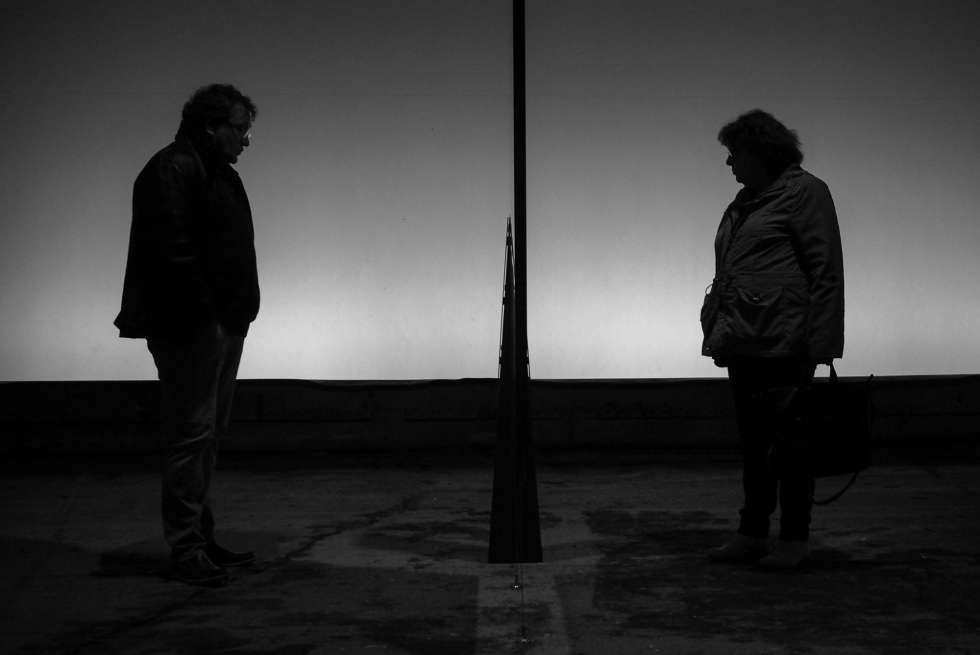To Look Straight On, Standing to the Side
From the Series: Book Forum: The Blind Man
From the Series: Book Forum: The Blind Man

To look straight on, standing to the side. I suppose I mean this in two ways. The first is how I approached Robert Desjarlais’s magnificent book. I sat reading the book in front of the woodstove on a snowy day. Every few pages I’d close it, stand up, rearrange myself, a dog circling the bed before lying down again. I’d pause for no reason to get a snack or make some tea. The book made me anxious for reasons I still can’t name. I didn’t know where things were going but felt their momentum build. Of course, in the book, there’s action––capturing images, the pursuit of the blind man, the thrill of the chase, Desjarlais as le chasseur of La Basilique du Sacré Cœur de Montmartre. Like Christopher Nolan’s film Following (1998), there is no telling where, in the throng, this intimate-though-otherwise-clandestine activity could lead. Or, akin to street photographers like Joel Meyerowitz or Garry Winogrand, there’s a sense of exposure, even revelation, in Desjarlais’s book: not only photographs but the “weave of words and images,” which brought me tremendous joy and unease—read directly but requiring some protective adjacency.
To look straight on, standing to the side. My second meaning is how I imagine Desjarlais’s relationship to his subject, not only spatially but also in character: an intricate display of closeness and remoteness. A photograph early in the book shows one man photographing another, posing with (or standing near) the blind man. A woman stands with her back to the author, between Desjarlais’s lens and the other photographer’s subjects, the back of the woman’s coat sharing the focal point with the blind man’s face. Desjarlais returns to the scene several times. What strikes me most is the unchoreographed nature of the photograph, as well as the distance that it signifies and accepts. It’s a glimpse of the blind man. But it is also fixed on him, even through a crowd. Is the photograph taken with these men a transaction? He seems slightly off-kilter, face twisted, abject. Is he being harassed, or the butt of some joke? The scene is filled with competing affects, and Desjarlais remains fixed.
This photograph complements another a few pages later. Police detain a young man, held by his hoodie like a cat picks up a kitten. He’s of Moroccan or Algerian descent, maybe a banlieue dweller. Desjarlais speculates, imagines, crafts: “See how easy it is to delve into a phantasmatical anthropology, where the forms and passions of a life are pictured for the reverie of imagined knowledge?” He predicts where this is leading and puts down his camera. It’s an act of protection. He modulates, makes choices, follows instincts—sometimes approaching scenes head on, sometimes standing to the side, adjacent but in the thick of it too. Behind the woman on the steps of the basilica, Desjarlais’s lens reaches out for the blind man past the fray of worshippers and tourists. In the case of the young man, Desjarlais stops when his lens could have amplified an already bad day. The two photos are placed between that which is unlivable and an impulse to make living (for oneself, for others) possible.
One final thought. The book contains lengthy and thorny passages on blindness and contamination: the reach of blindness through the lens, penetrating the eye of the photographer-anthropologist. I love these passages, especially their physicality. The passages are filled with concern (about aging, contact, decline) and gravity. They peel and pick at the vellum that covers and connects those gathered in images and the gatherer.